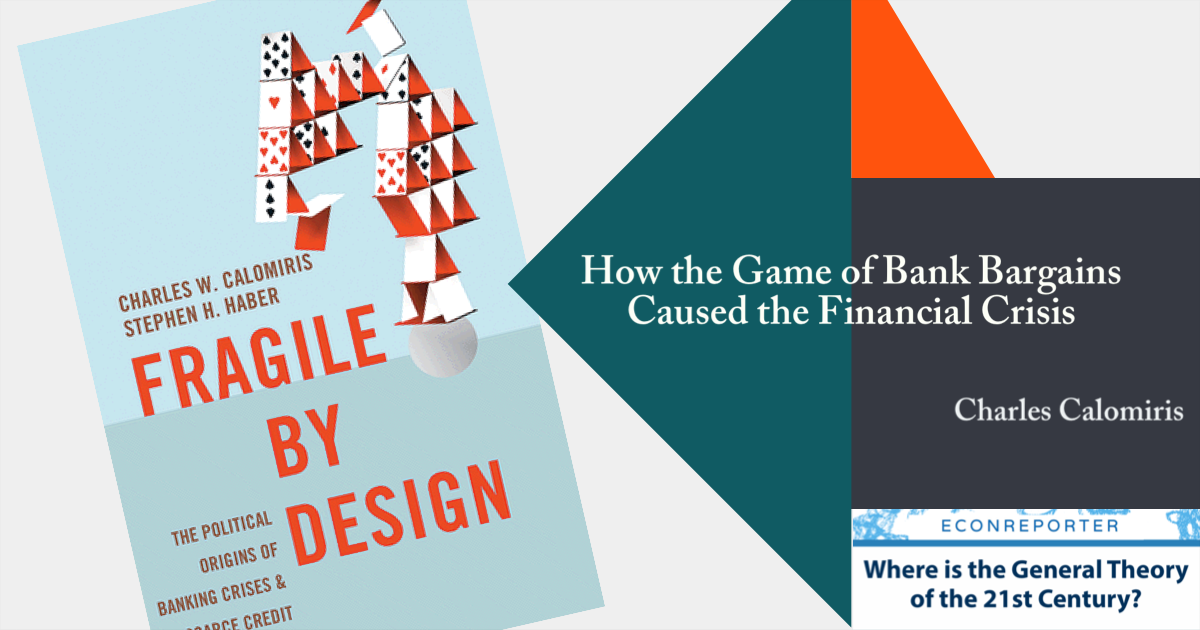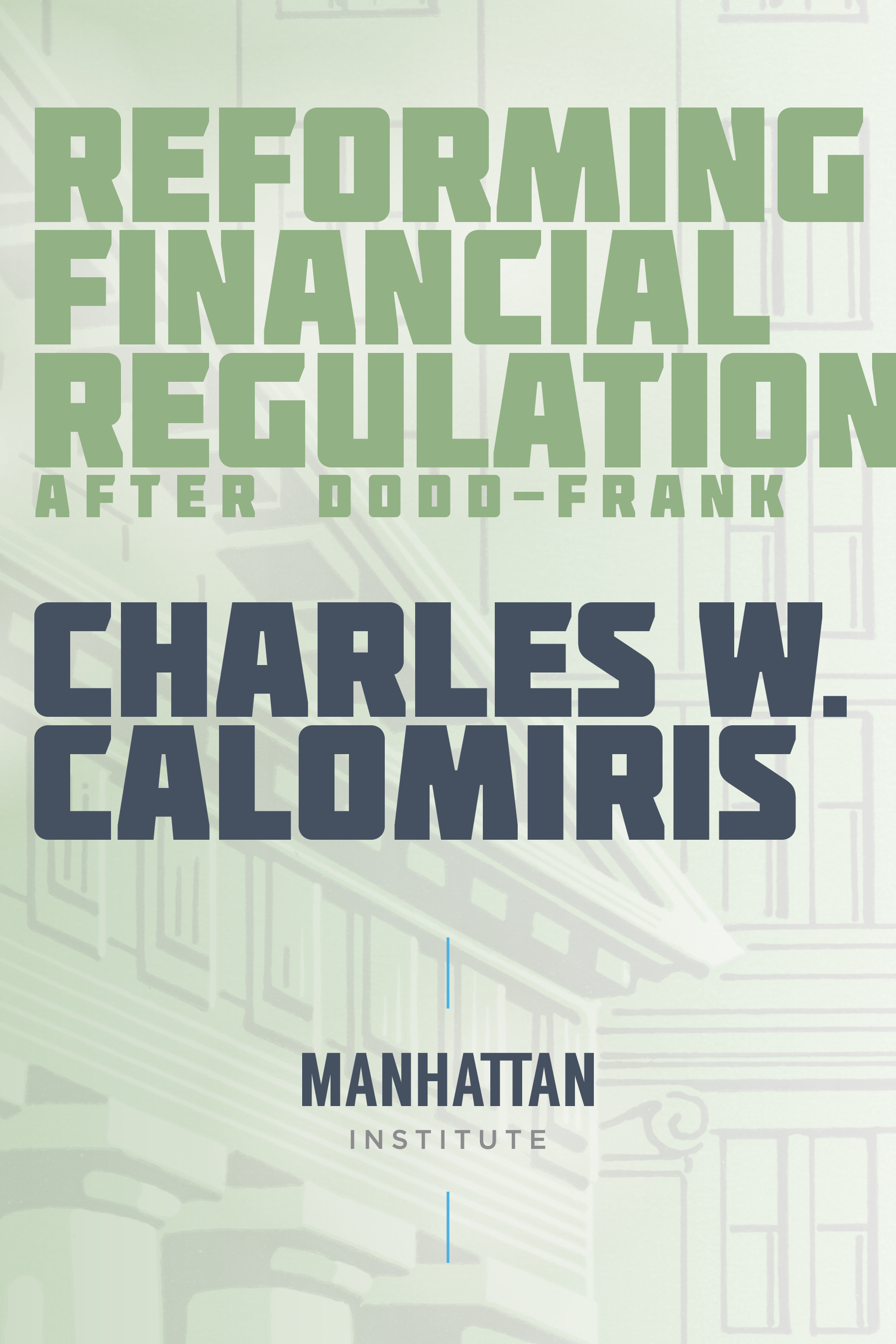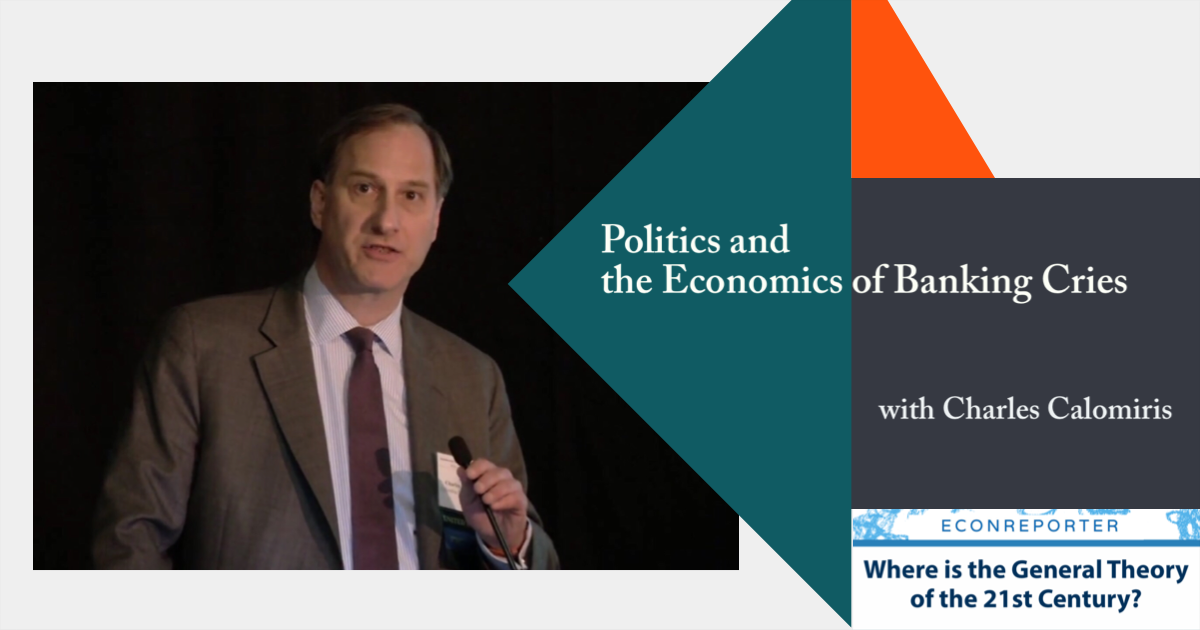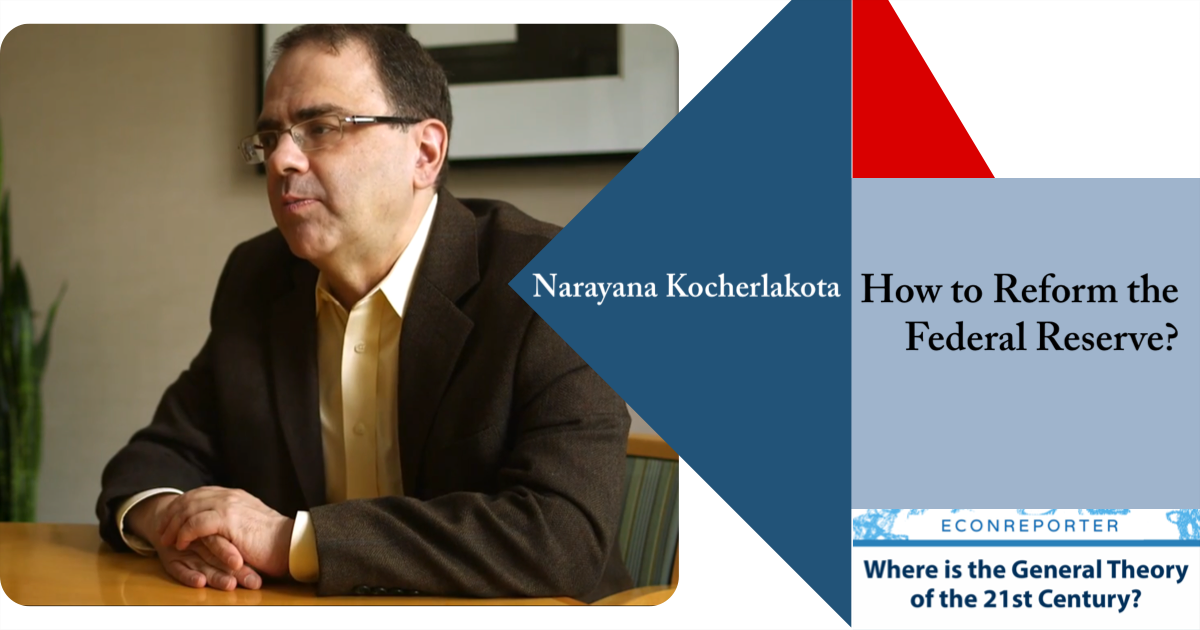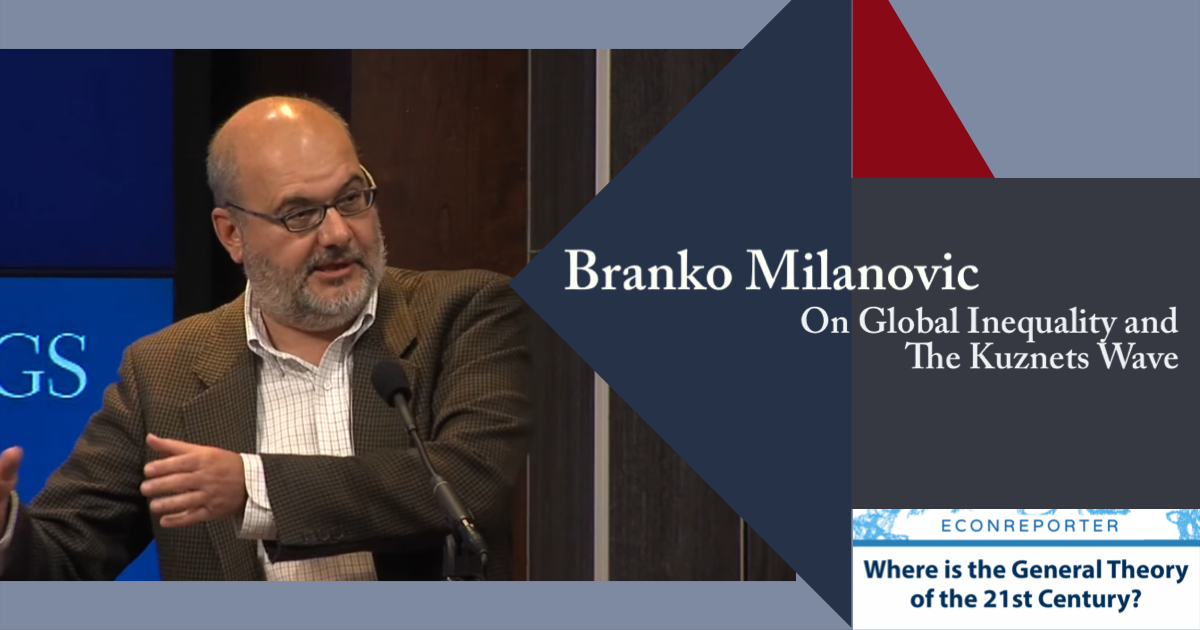Last Updated:
Welcome to the latest installment of our interview series “Where is the General Theory of the 21st Century?”
“Where is the General Theory of the 21st Century?” is an interview series which we ask top economists a very important question: “Why haven’t economists come up with a new General Theory after the Great Recession?” We want to know how the macroeconomics academia has evolved since the Great Recession, and why the responses from macroeconomists since 2008 are different from their counterpart in the 1930s.
In this installment, we make another interesting “detour” from normal Macroeconomics topics. Instead, we invited Prof. Charles Calomiris to discuss the role of political institutions in causing the Financial Crisis of 2008.
Charles Calomiris is Henry Kaufman Professor of Financial Institutions at Columbia Business School, Director of the Business School’s Program for Financial Studies and its Initiative on Finance and Growth in Emerging Markets, and professor at Columbia’s School of International and Public Affairs. In the first part of our interview, Prof. Calomiris explained some major ideas in his book “Fragile by Design”, which he coauthored with Prof. Stephen Haber.
(The interview is edited for clarity. All mistakes are ours.)
Q: EconReporter C: Charles Calomiris
Q: What is the Game of Bank Bargains in brief terms?
C: The Game of Bank Bargains is a phrase which Stephen Haber and I invented. We use it to explain the formation of coalitions which are based on different ideas of how certain political groups would like the banking system to be structured, so to achieve their own purposes. Some coalitions want to see a particular outcome, while other coalitions want to see some different outcomes.
Part of the game is to construct a coalition that is likely to win. This involves some internal tradeoffs within the coalition. We think of it as a bargaining game, in which the coalition endogenously emerges as part of the bargains between the members of the coalitions. For example, the coalitions almost always include the government as one of the players. It is because the government’s fiscal needs are part of the considerations of banks’ licensing and regulating process. Depending on the structure of the political system, there are other key players whose views and interests would be important in deciding the outcome.
How the game is played depends on the structure of the political system. The rules of the game for deciding the structure of the banks in autocracies are different from democracies. And even among democracies, the rules are quite different. It depends on whether the democracy is structured one way or the other. Similarly, among autocracies, the rules are often very different.

In our book, we made these points by illustrating that, for example, the differences between democracies in the US, Canada, and the UK; and in Brazil and Mexico for some more recent periods. We also talked about differences in autocracies with the examples of the differences in historical behaviors of Mexico and Brazil. We tried to use those examples to illustrate how the Game of Bank Bargains can be a general concept that explains how coalitions are formed to bargain over how to structure and regulate banks. We think it is very robust and is true in all context
The particulars of how the game is played and what the outcome would be are different in each of the cases. It depends on whether it is democracy or autocracy; and then, what the structure of those democracies or autocracies are. Those factors have important consequences on how the game is played.
Q: Under your framework, the Financial Crisis in the US at 2008 was the result of a long history of political institutions.
In my opinion, two of the political causes you have mentioned in the book are fascinating. First, it is the agrarian populist and unit banks coalition; second, it is the rent-seeking behavior resulted from Community Reinvestment Act (CRA). Can you explain why these two fundamentally caused the Financial Crisis?
C: Let me start by pointing out that since we finished the book, I have been doing some research looking at cases outside the US. One of the things that are really striking to me is that there is the US in the 2000s is really just one example of a general pattern. In a research which I am doing right now with Sophia Chen at the IMF, we found that the same pattern which Haber and I described for the US is actually a very common pattern all over the world in the last 40 years, and increasingly so.
The pattern is that the governments, on the one hand, protects banks in the forms of deposit insurance or government bailouts when a crisis happens, or give banks certain opportunities. In exchange, the government asks things from the banks. In the last 40 years, especially across democracies, the thing that the government was asking the bank to do is to get heavily involved in residential real estates funding or to subsidize mortgages.
One of the thing that has been happening all over the world is that people in democracies are hoping that their governments can come up with programs that would make housing more affordable. The easiest way for governments to do that is to get banks to subsidize mortgage risk. The way the governments get the banks to subsidize mortgage risk is by protecting the banks. They give the banks something in exchange and then tell the banks “OK. Now we have given you the protections. We have given you these new rights. They are very valuable to you. The cost is that you have to do something that we, the government, found politically expedite.” What Sophia Chen and I are finding now is that the story about the US in our book “Fragile by Design” may actually be a broadly-based story.
Now, I finally start to answer your question. After 150 years of counterproductive limitations on US banks abilities to bench and to develop their banking business across state lines, even within states in some cases, we finally decided to get rid of the restrictions. But the banks would now have to have their mergers approved by the Federal Reserve Board. One of the ways that politicians could intervene, therefore, was to effectively pressure the Federal Reserve to make approvals of bank mergers conditional on how much the banks gave to urban activities group, in the form of subsidized mortgage risks and other kinds of benefits.
According to my calculations, banks in total entered into roughly 2.5 trillion dollars’ worth of agreements in order to their mergers approved over the relevant period that we described. There were hundreds of mergers that were approved in the last couple of decades. For those hundreds of mergers, the Federal Reserve Board has held hearings for them. The way the banks can make sure it got approved was to bring people to the hearings to testify that the banks were doing an excellent job as community citizens. Why would the people know the bank was doing a great job? Because the bank has given them money. That sounds like extortion. Many people have actually called it extortion. Nonetheless, that stays as a very important part of it.
Furthermore, in order to make those concessions that I just described even bigger, the Senate decided to pressure Fannie Mae and Freddie Mac, the two large Government Sponsored Enterprises (GSEs) that are involved in purchasing secondary mortgages, to subsidize mortgages for everyone by buying the mortgages at a high price through secondary market and insure the GSEs against losses. In 1992, Fannie Mae and Freddie Mac were told that they had to make a certain proportion of their mortgage purchases to certain areas, for example, the inner cities in the US, and low and moderate income groups. They have a set of mandates on what proportion of their total purchases have to be related to these targeted groups.
Because Fannie and Freddie were required by law to expand their purchases of certain categories of mortgages as they expanded, the banks know that they could offload some of their CRA commitments to Fannie and Freddie. You might say it was a very clever approach to get subsidies happening.
In exchange for participating in all these, banks don’t just get to engage in the mergers. They also got very generous prudential regulation that was not imposing very high capital standards on them. The GSEs also got very generous capital standards that encourage them to be able to take on these high risks. So, I would say the government, actually organized the binge in risk taking through its policies towards Fannie and Freddie.
Some people have gotten very confused by the fact that Fannie Mae and Freddie Mac weren’t just buying mortgages for low-income people, but were buying mortgages for middle and high-income people also. The reason this happened was that for Fannie Mae and Freddie Mac to achieve their affordable housing mandate, the way was to relax their mortgage standard across the board. It didn’t just open up riskier mortgage purchases for low-income people but for everyone. That was because you couldn’t just say, “We are relaxing these standards selectively to meet our affordable housing goal.” That would have been an indication that the GSEs were doing something risky. Instead what they said was, “What we are doing is not risky at all. It is very scientific. We know what we are doing. We are just relaxing these standards that are no longer really necessary.” That’s why the affordable housing goals were the cause of the expansion in mortgage risk.
Q: I am very interested in your new research, is there any working paper published yet?
C: No, we haven’t circulated it yet. We have preliminary empirical results and I have cited it in a few of my other papers. But we haven’t released it yet.
Q: Do you think the changes in financial regulations since the Great Recession has helped us to solve the above-mentioned problems?
C: I would say that the financial regulatory reform has not been successful. They have been ineffective in solving the problems they are intended to solve. They created lots of new clauses and also further opportunities for politicized regulatory action. It’s quite a mess. That is not something I can talk about briefly, as you know there are thousands of regulations, But I have written a new short book called “Reforming Financial Regulation”, which will be released in a month or so, which go through the details.
I would say that there are three big elements to the failure. The first element is the failure to achieve objectives. We haven’t really stopped Too-Big-to-Fail. We haven’t really created capital standards that are reliable the next time we have a major shock. At the same time, we created huge costs to complying the regulations. Furthermore, we have also instituted processes which are fundamentally contrary to the rule of law as the US always practiced. Whether you are looking at the Consumer Financial Protection Bureau (CFPB), the so-called “Operation Choke Point” or the way stress tests are administered, they all fundamentally violated the rule of law in regulations that the US has experienced in the last 200 years.
What happens was that things get very politicized. The banks become very unpopular. Politicians feel empowered to do these things that may actually be inconsistent with the constitution and our general legal framework. But given the public outcry, they feel somehow that they can get away with.
It’s not just that the regulations have been ill-advised. They are likely not to be able to achieve their objectives and are way too costly. They have also become a fundamental threat to our democracy and to our way of life under the law. People don’t usually talk about regulations in this way because people are not familiar with what the changes really have been. That’s why I have written this new book because I think what’s happening is really quite outrageous.
I think we are now in the process of rolling back some of those regulations. We will in the next couple of decades, maybe even faster. The Republican in the House has drafted a new bill called the Financial Choice Act. They are in the process of releasing the revised version of it soon. There are a lot of good things in there. I wouldn’t advocate absolutely everything in there and I don’t think it contains everything that needs to be in. But it does have quite a lot of good things in it.
There is going to be a very active debate over the next couple of years in the US about a regulatory reform. I think you are going to see a lot of changes. I think the Dodd-Frank Act was possibly the worst piece of legislation having to do with finance that was ever passed in the US. That’s pretty clear.
Q: Do you agree that the populism we are facing in the US right now is very different with the kinds populism back in the days, as you have mentioned in your book?
C: Yes. They are different people and there is a different coalition that is in charge. It used to be the rural populist that are winning in the Game of Bank Bargains. More recently the urban populist is winning. It has to do with a lot of factors, including the shift of population from rural areas to urban areas.
Yes, so there has been a change. But the US has always been quite populist, especially due to changes in rules of how elections are run in the US since the mid-19th century. Don’t forget that the US is a country that was created by a revolution. It is not surprising to find that it has a Constitution which, despite all the things that our founders said about check and balances, doesn’t really limit government popular majority rule.
In fact, our country is one that has had a history of very much populism. Populism has always been an important ingredient in America. You can contrast it in that regard to Canada. In our book, we mentioned that many of the same political groups that were active in the US were also active in Canada. But the outcome in Canada was very different. This is because the rules of political engagement were very different in the US and in Canada. The constitutions were so different. So I wouldn’t say that populism is new in America. I would say that the winning coalition shifted from a rural populist coalition to the urban populist coalition.
About 200 years ago, the urban populist or you might call it the urban constituency, were against unit banking law that prohibited bench banking. But the urban area was not big enough to have that control. This shifted in the 20th century. So, it is not that the US has become more populist. At least for the last 150 years, I would say that we are pretty populist. The US has been a highly populist political system. But which coalition is the winning coalition in deciding, among other things, the structure of banking system? That’s what has been changing. It has really changed dramatically in the last five or six decades.
The interview will be continued in Part II, where Prof. Calomiris will discuss his view on the role of politics in the theories of banking crisis and Macroeconomics.
Politics and the Economics of Banking Crises with Charles Calomiris | #WITGT21 Interview Series |
Welcome to the latest installment of our interview series “Where is the General Theory of the 21st Century?” “Where is the General Theory of the 21st Century?” is an interview series which we ask top economists a very important question: “Why haven’t economists come up with a new General Theory …
EconReporter is an independent journalism project striving to provide top-notch coverage on everything related to economics and the global economy.
💡 Follow us on Bluesky and Substack for our latest updates.💡


